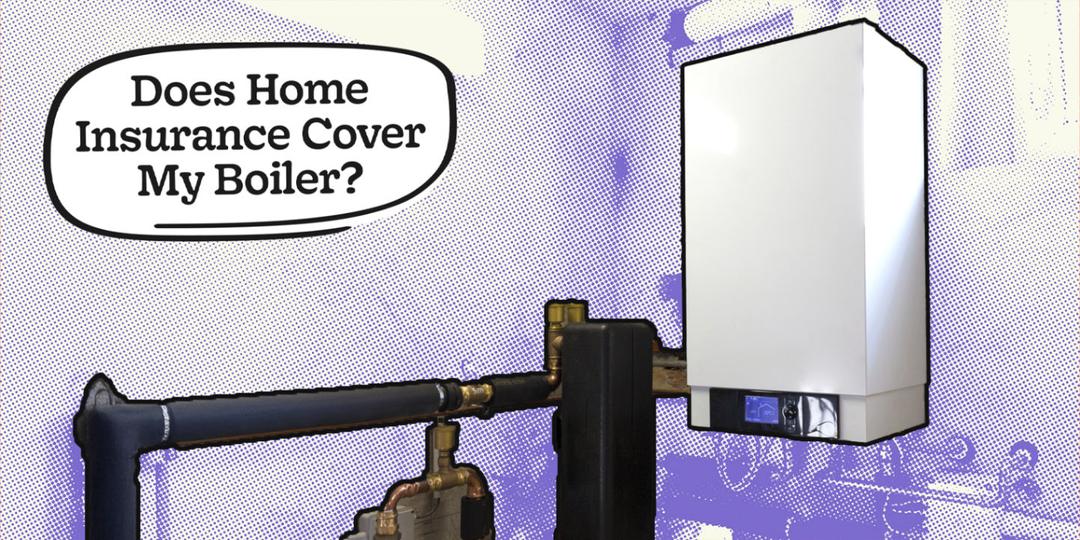Toying between these two? They say a Nest in the hand is worth two in the Hive... or something like that.
- Factors we considered when comparing Nest and Hive
- Nest vs Hive: The Thermostat Battle
- Nest vs Hive Designs Compared
- Nest and Hive Features Compared
- Nest vs Hive Installation
- Nest vs Hive Power Supply
- Can you get them professionally installed?
- Hive vs Nest Warranty Periods
- Is the Nest and Hive Compatible with my Heating System?
Are you thinking about installing a new smart thermostat into your home but can’t decide whether to choose a Google Nest or a Hive?
And we’re not talking birds and bees here - that’d be inappropriate.
Nest and Hive are two of the UK’s heavyweights when it comes to smart thermostats and millions have been installed to date.
Thousands more are collecting dust and waiting for a free Saturday afternoon to finally be installed.
But which is better?
In this guide, we review and compare both thermostats, providing unique insights based on our extensive testing and experience as a company that has installed thousands of thermostats nationwide, to help you decide which, if any, is the smartest choice for your home as we take a deep dive into their key features and similarities.
Key Findings:
Price: Hive is generally more affordable than Nest, making it a better option for the budget-conscious.
Learning vs. Customisation: Choose Nest if you prefer a thermostat that learns and adapts automatically. Choose Hive if you want more manual control and customisation over your heating schedule.
Compatibility: Nest might be preferable if you are already using Google products, while Hive is a good choice if you use Amazon Alexa.
Factors we considered when comparing Nest and Hive
Smart thermostats are designed to help you gain more control and save time monitoring your energy use.
The ideal smart thermostat is easy to use, easy to install and has the most innovative features to help you reduce energy waste and hopefully deliver some big financial savings as a result.
Actually, the ideal thermostat would also make you hot coffee in the morning and sing you some lullabies at night, but we have to keep our expectations realistic.
This combination of ideal features is the sweet spot and where the best smart thermostats outperform all others.
Considering that, we have compared Nest and Hive based on the following factors:
Ease of the installation process
User-friendliness of the thermostat
The overall usefulness of the features offered
The ability of the thermostat to save you time and money on your energy bills
Compatibility of the thermostat with virtual assistants such as Alexa and Google Home
The price range of the smart thermostat
Customer reviews and reputation
Warranty period the brand offers
Number of letters in the product name (it’s a tie)
Prefer video? Check out our review of the best thermostats in the UK in the video below:
Nest vs Hive: The Thermostat Battle
The Nest Smart Thermostat (now owned by Google) is on its 3rd generation model and continues to innovate in terms of features and design.
A major advantage of the Nest brand is that it allows households to create a complete smart home ecosystem with the addition of video doorbells and security cameras.
Their comprehensive product range gives it a clear advantage over Hive, especially for people looking to develop a complete smart home.
Please remember that a smart home refers to your devices, not your children. No thermostat will help you there.
Still, Hive is an extremely reliable, market-leading smart thermostat created by the energy titan British Gas, so if anyone knows a thing or two about energy use, it’s them.
Nest vs Hive Designs Compared
We understand that design is highly subjective, but there’s no denying that the Nest stands out among its rivals and has won multiple design awards. And it’s always better than the homemade painting your aunt gave you for Christmas last year.
The simplistic and stylish design of the Nest makes it stand out from its rivals by a clear mile. The circular design and sleek, high-resolution digital interface free from wires and buttons make it look good almost anywhere. If you know nothing else about interior design, the Nest might be the design highlight of your house.
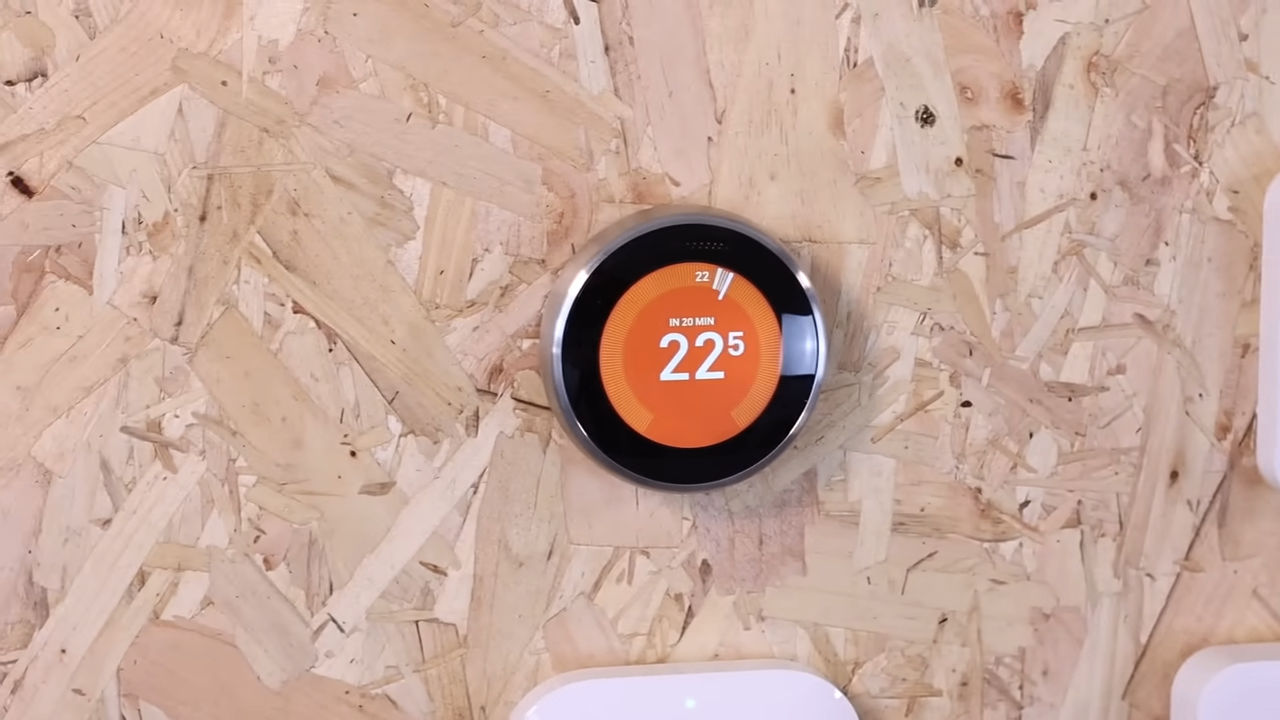
Patrick Garner/Heatable
But hey, the Hive is no ugly duckling, the box-like design looks pretty good as far as thermostats go, but it looks quite dated next to The Nest’s high-resolution, digital interface.
Although, you can choose a custom thermostat frame designed by Dulux to match the colour of the décor of your home, which is a nice touch, but only works until you decide to paint your walls.
Nest and Hive Features Compared
In terms of the number of features, there’s no doubt that Nest wins hands down, but some may question whether all of them are necessary.
Some may even find the Hive’s shorter list of features means the learning curve is less steep and it has everything they’re looking for.
Still, we think that the Nest has the edge, and these are the reasons why:
Autolearning Features Compared
In terms of learning about your heating needs, the Nest has auto-learning features making the process much more suited for people who want a more hands-off experience. This includes automatically adjusting the heating to your behaviour and daily routine.
The Nest also adjusts based on the weather, enabling Nest to create a very personalised schedule.
The Hive is a more manual option, lacking autolearning features, but still enabling convenient control from the mobile app or device itself.
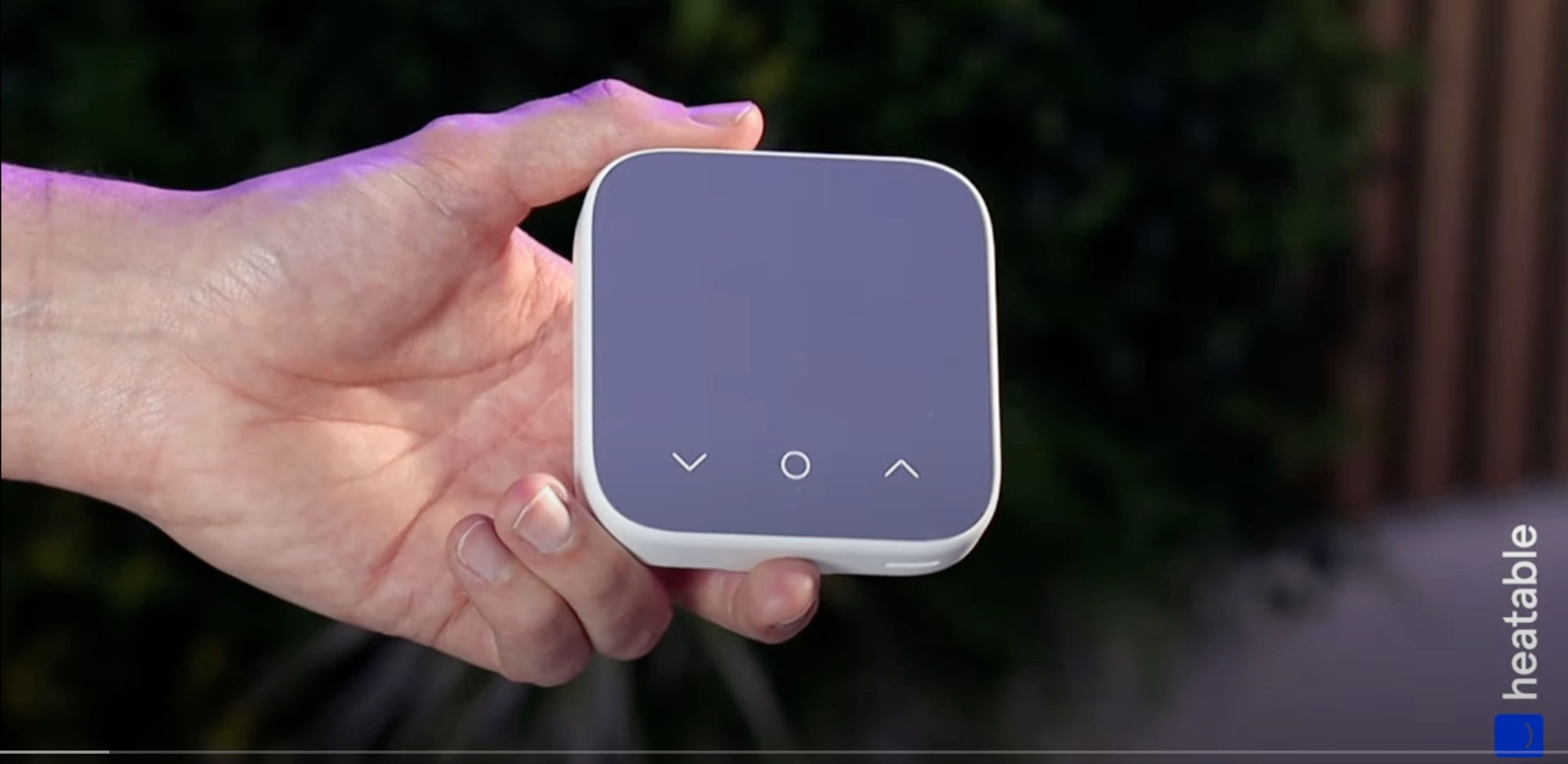
Patrick Garner/Heatable
Control Features Compared
Both thermostat devices can be controlled from their own apps via your smartphone or tablet, or manually at the devices themselves. Controlling your thermostat’s schedule is probably the most frequently used feature and there are big differences between the devices.
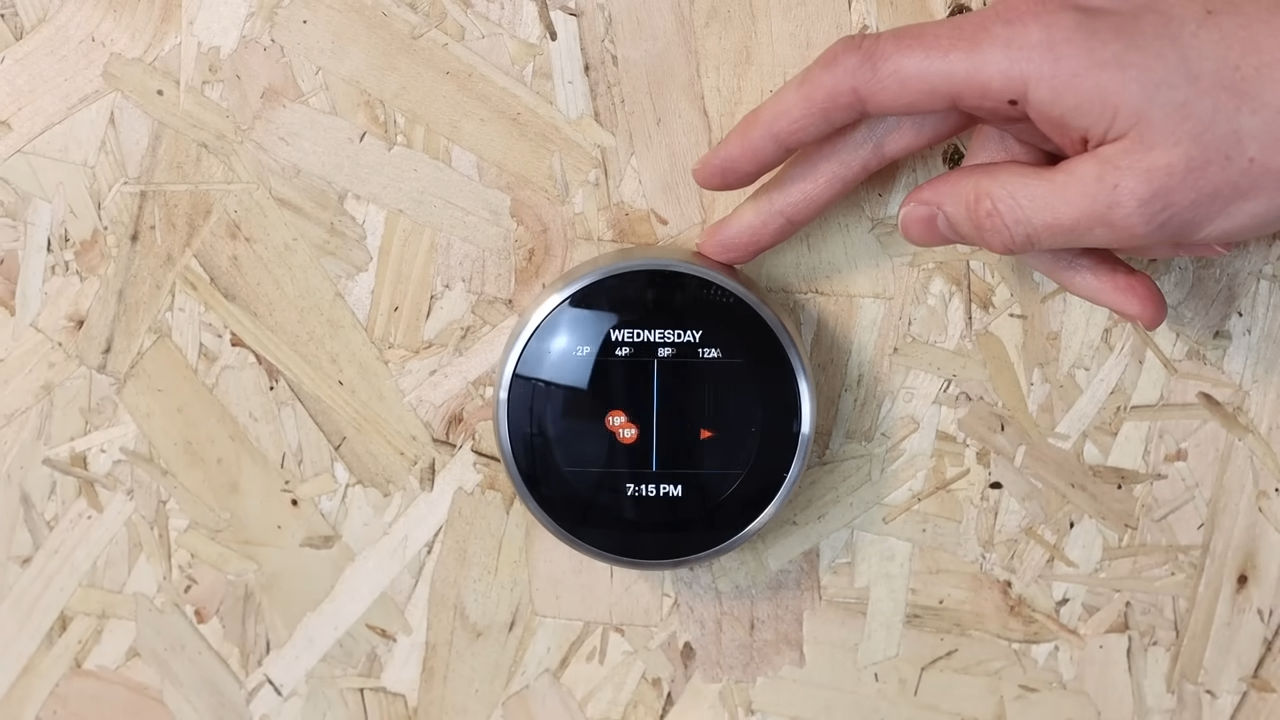
Patrick Garner/Heatable
The Nest utilises autolearning, which is a great feature for those looking for a truly smart experience, yet that also means it takes some time to learn when you initially install and set up the device.
On the other hand, controlling the Hive is completely manual, so it’s a case of adjusting your own schedule over time until you are happy.
Maybe some exaggeration will help you clarify the differences between the Nest and Hive. Picking between them is choosing either letting Skynet run your house or manually adjusting your thermostat at every change in temperature like you’re still churning butter by hand.
Turning down your boiler flow temperature could also save you up to 8% on your heating bill, check our new guide on whether to turn the radiators off in unused rooms for another quick and free energy-saving hack.
Zone Features Compared
Zonal heating is the concept of only heating certain zones e.g., rooms within your home, such as those that are in use.
Multi-zone heating allows you to split your home into multiple zones with their own heating controls with the use of smart radiator thermostatic valves. If your wife always carries a blanket because she’s cold, you could set up her side of the couch as a separate zone, so you don’t have to suffer the heat.
In terms of zone support, the Hive is severely lacking in comparison to the Nest. The Nest app offers up to 20 zones, which can also be accessed by up to 10 people via the Nest Family Account, allowing everyone to see energy reports and change the settings for each zone when required. This is easily enough for almost any size family and home.
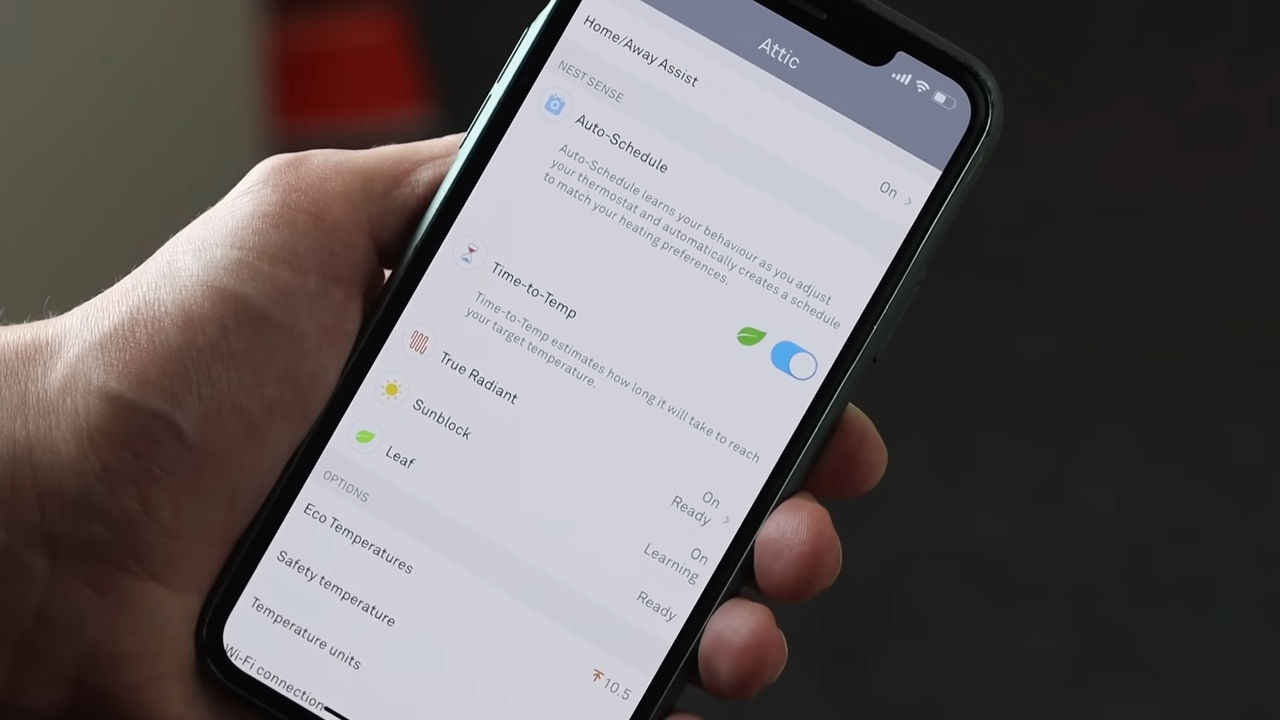
Patrick Garner/Heatable
Unfortunately, Hive only offers a maximum of 3 zones, which can be controlled via the multi-zone feature within the app. Additionally, the app lacks family account functionality, meaning only one account can be set up for the app.
This means all members of the household must share the login details and tracing each user’s changes is more difficult (for those interested in doing so). If the Crawley family were looking for a smart thermostat, the Hive just wouldn’t do.
Location Detection (Geofencing) Features Compared
Have you ever left your heating on and haven't been able to turn it off until you get back home? Or would you like your home to be warm when you arrive, instead of coming home to a cold house? This is where location detection features come in useful.
The good news is that both Hive and Nest benefit from Geolocation, meaning that they will detect your presence.
The Hive can detect when you have passed a certain distance from your home and will send you an alert via the app that your heating is still on. It won’t alert you if you forget your kids or feed the dog.
Nest also benefits from this feature, and both can adjust your thermostat setting based on your presence i.e., turning it off if you are away from home and turning it back on as it detects you are within the geofence or on your way back home.
Again, the Nest does have the advantage of its motion sensor, which simply provides an alert on its display once you walk past the device or adjusts your heating settings if it detects that nobody is home - or that only Kevin McCallister was left behind, which is the same thing.
Unfortunately, with the Hive, you must purchase motion sensors separately to take advantage of this feature.
Related thermostat reading:
Device Compatibility and Connectivity
A major concern of many curious new thermostat buyers is the compatibility – can it be used with your other devices?
Fortunately, both the Nest and Hive apps are compatible with standard digital devices including:
Computers
Mobile phones
Tablets
And what about connectivity? Can they be used with popular voice assistants such as Amazon Alexa?
Yes, the devices can be used with all of the most popular virtual assistants, including the following:
Amazon Alexa
Google Home
Logitech
IFTTT
Samsung SmartThings
WeMo
Wink
Xfinity
Nest vs Hive Installation
Which device is easier to install? Is it a DIY process?
The good news is that both the Hive and the Nest do not need to be professionally installed, yet that comes with a few caveats. For example, if you can’t put batteries in a device, you won’t be able to install these yourself.
The Hive can be powered via four standard AA batteries and is completely mobile and able to be used with a stand (this is sold separately), it can easily be moved around the home or positioned on a wall bracket.
This makes it a remote control for your temperature, where you lose it just when you need it. And no, you won’t need to change the batteries too often, they are designed to be powered for up to 2 years.
On the other hand, the Nest needs mains power and so must be connected to a wire. This gives you the option of keeping the Nest on a bracket connected to a nearby plug socket, or you also have the option of getting it professionally wired to the mains and wall mounted.
Read all about how to use a smart thermostat and see what temperature you should set your thermostat in winter.
Nest vs Hive Power Supply
The Nest thermostat needs a constant power source to work properly which is achieved by a mini-USB attached to the mains either directly into a USB port or attached to a USB three-pin plug (via an additional stand). This power can be supplied via a wall hardwired into the bracket supplied with the unit itself.
On the other hand, the Hive can be powered by batteries or a plug connection, offering greater flexibility in terms of location and mobility.
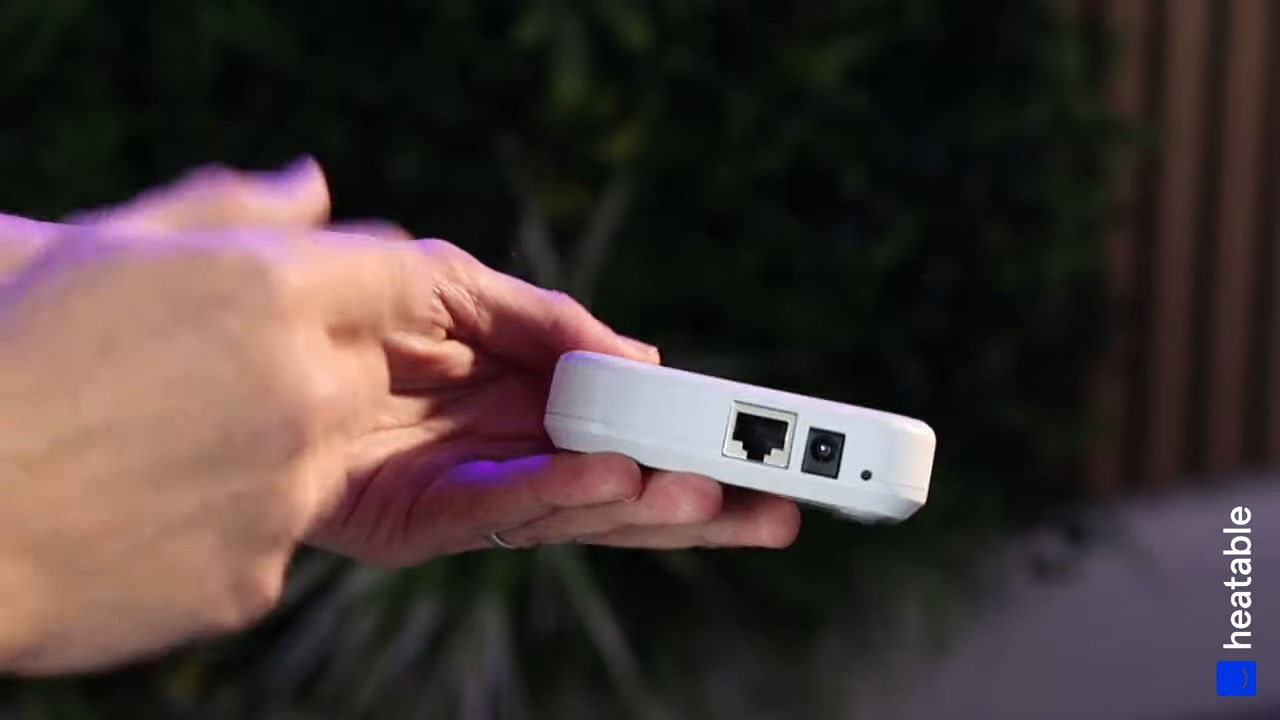
Patrick Garner/Heatable
Can you get them professionally installed?
Yes, both devices can be installed and set up by accredited installers. A Nest Pro Installer is a professional Nest installer who has been vetted and accredited with specifically installing the Nest device.
If you do opt to have the Nest installed by a Pro installer, you will be entitled to the extended Pro warranty, so it is certainly worth considering.
Hive also offers professional installation via the British Gas network of registered gas-safe engineers.
Related thermostat guides:
Hive vs Nest Warranty Periods
Which brand offers the most generous warranty period?
When buying any new product, the warranty period is an important consideration, as if something does go wrong, you want the reassurance that the manufacturer will help you repair it and get it back in working order.
Nest wins. They offer an impressive 2-year warranty, the Hive is only available with a 1-year warranty. That’s double the length!
Better still, if you opt to get your Nest installed by a Nest Pro i.e., a professional and vetted Nest installer, you will be entitled to an additional 2-year warranty, so 4 years in total.
HELP! If you’re having issues with your Hive thermostat, check out our guide on the top reasons why your Hive app/thermostat isn’t working
Is the Nest and Hive Compatible with my Heating System?
The good news is that both devices are compatible with a vast array of different heating systems, including the following:
Combi boilers, biomass, system boilers, immersion heaters, and heat-only boilers
Air source/ground source heat pumps
Underfloor heating systems
Zoned heating/multiple zones
Domestic tanks for hot water
Systems enabled with Open-Therm technology
Although old-fashioned fires work well with old-fashioned hives, your fireplace won’t connect with a smart thermostat.
However, if you want to make doubly sure, you can always check your unit’s compatibility on the official brand website, simply enter your appliance's model number and it will give the answer.
You can do that with Nest here, and Hive here.
Hive vs Nest Conclusion
Both Hive and Nest Thermostats are popular, reliable, and useful at helping you gain better control of your home heating and bills, while at the same time allowing you to save time in the process.
In terms of a winner, it’s clear that Nest has much more to offer in terms of design and, more importantly its vast array of features.
Nest offers a more comprehensive and truly smart experience with geofencing (without the need of having to buy additional sensors), as well as autolearning and enhanced zoning capabilities.
Still, for those looking for a more basic thermostat with a fuss-free installation, the Hive still has great utility and is incredibly easy to use.
Ultimately, if you would like to have more control of your energy use and save money on your bills, a smart thermostat is a great way to start.
In fact, according to the Energy Saving Trust, installing heating controls - a smart thermostat combined with thermostatic radiator valves could save you as much as £185 each and every year.
New boilers installed by Heatable are compatible with smart thermostats including Nest, which you can now order with your boiler.



